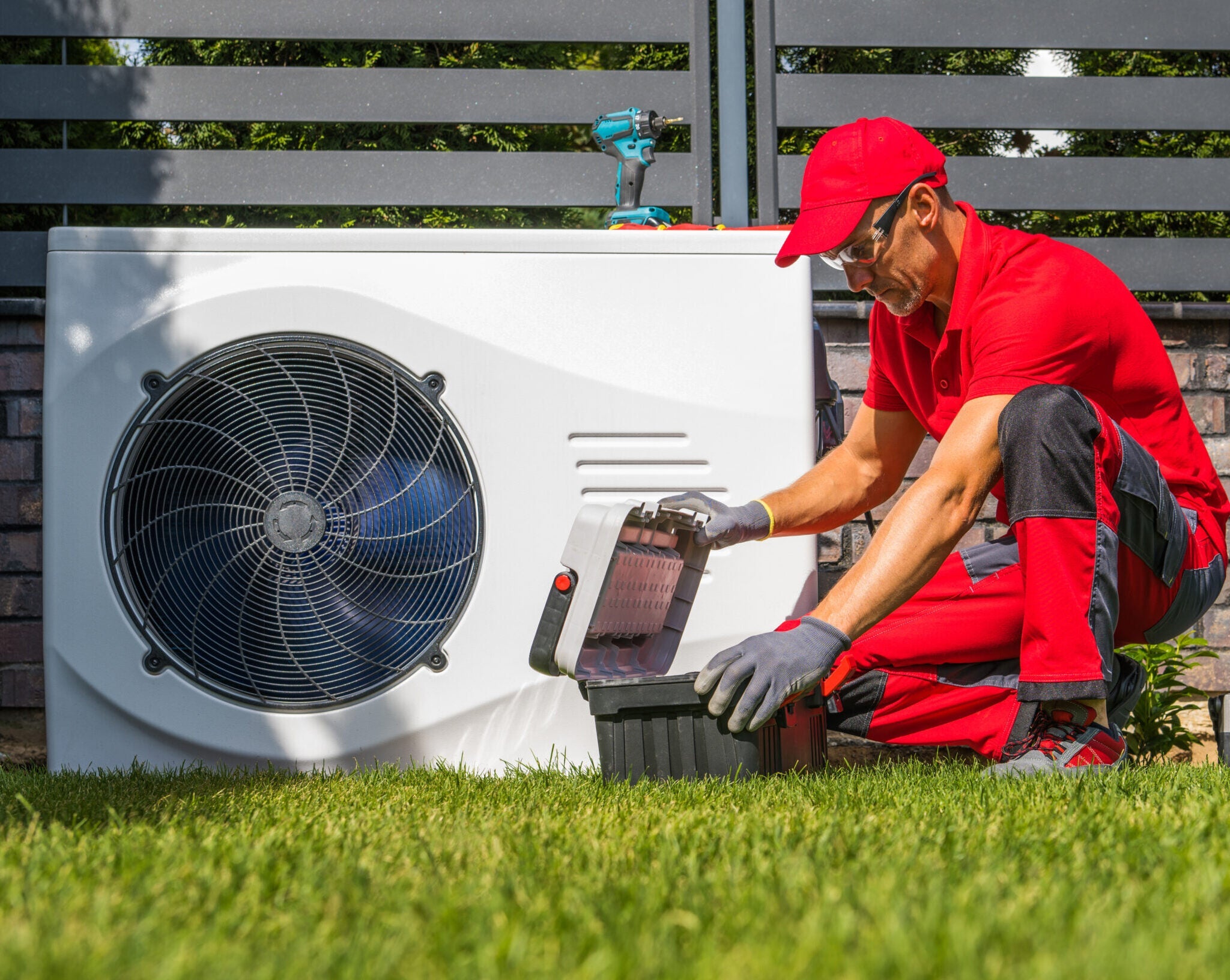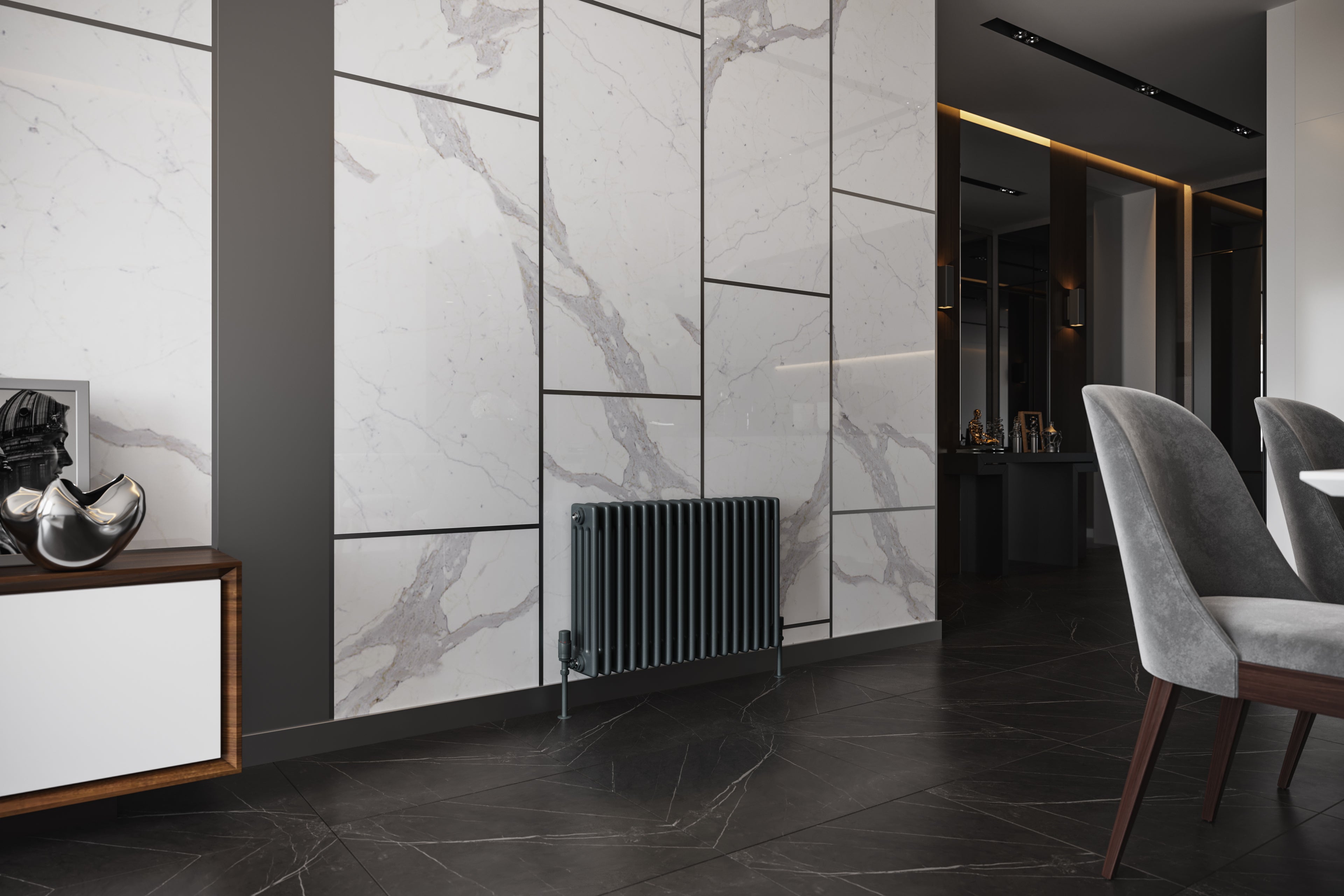
Myth-Busting Heat Pumps
Myth 1 – Current radiators in our home are oversized enough for heat pumps
No, they are not. The level of oversizing has to relate to the flow temperature and COP for a heat pump. For example, a heat pump may say this for a COP: A-7/W35 Radiators are sized for heat outputs based on Delta, with Delta 50 being the current industry standard (it shouldn’t be, but let’s park that for the moment). Delta 50 represents a non-condensing gas boiler with a flow temperature of around 80°C. A COP of A-7/W35 is a water flow temperature of 35°C when it is -7°C outside. If you have a 500 Watt room heating requirement and you want to achieve a COP of A-7/W35, your radiator would have had to be installed with a heat output of about 3200 Watts at Delta 50. If you wanted A-7/W55 COP, your radiator would have had to be installed with a heat output of about 1500 Watts at Delta 50. Unlike everyone else who is just going along with the “radiators are already oversized” notion, we actually have done the research, which you can read about on our “Are Radiators Oversized” blog.
Myth 2 - Radiators can’t work with heat pumps
Yes they can The second law of thermodynamics tells us that provided a radiator is appropriately sized to its expected internal flow temperature and external weather conditions, it can heat the room. The size you need is based on this calculation for your home and geographical area. Again, here is our proof of this statement “Can radiators work with heat pumps”.
Myth 3 – Lukewarm radiators cannot heat my home
Notions of a “lukewarm radiator not being able to heat my home” were resolved in 1850 when Rudolf Clausius and Lord Kelvin published their statements on the second law of thermodynamics, which were subsequently refined over the last 170 years. First off heat pumps don’t actually use lukewarm water, when it is very cold outside (in the minus numbers) you design an Air Source heat pump to use a flow temperature of 55°C, when it is much warmer outside, it is a flow temperature of 35°C. What it boils down to is the energy transference rate over the surface area with the temperature gradient (the difference between the radiator and room temperature). If we compare that to gas boiler installations, that are configured once and left to work over the winter. You would probably find the same flow temperature, say 70°C, when it is very cold outside being used when it is warmer outside. This is actually a very bad way to do it compared to a heat pump, which should have much lower temperatures when it is warm outside. Basically, when it is warmer outside, the reality of having your radiators above “lukewarm” temperatures is madness. Just a massive waste of energy. You can learn more about this in “Can radiators work with heat pumps” and “How do heat pumps work”.
Myth 4 – I can use the COP or SCOP listed on a heat pump to calculate my expected heating costs
COP – not on its own you can’t. SCOP – you definitely can’t. A COP is a representation of energy usage for a specific condition, how likely that condition is to come about depends on your geographical area. A SCOP listed on a heat pump, which is a seasonal COP, has no bearing to anyone as this changes quite significantly over the landscape of the UK. You use the COP on a heat pump model as a variable required to calculate what your costs will be, you can’t average multiple COPs without weighting them. Below is our relationship between COPs and the Energy requirements of an example home. The home was rated at 8KW when it -1°C outside with a target room temperature of 20°C. As you can see, as the COP lowers, the heat energy requirement rises. Therefore, in order to use the COP we need to know the rough local weather conditions and weigh it appropriately. To get an idea of bill prices rising/lowering, we have to compare it to our current system in place. So the data can be used, but all of these factors need to be accounted for, you can read more about this in our “Is the COP on a Heat Pump Accurate” blog.
Myth 5 – Heat pumps cannot heat my home
This is false. In simple terms, they work exactly the same way as a fridge/freezer does. We think of a fridge/freezer as cooling down/freezing our food. How we need to think of it is that the fridge/freezer is removing heat from the reservoir (the inside of the fridge/freezer) and dumping it in our room. So a fridge/freezer actually heats up our room while making food colder. A heat pump is simply taking heat from the outside world which is a much larger pool of energy, and dumping that into our home. Rough history of science timeline:- 1850 – Lord Kelvin and Rudolf Clausius publish their statements on the second law of Thermodynamics, which tells how heat naturally moves based on the temperature difference between two environments, the bigger the temperature difference, the more energy can transfer.
- 1854 – First commercial ice making machine was made.
- 1913 – Home refrigerators were available.
The point is, a heat pump is old technology, not new technology. It is the history of science, not modern science or science fiction. We cover this more in our “Can Heat Pumps Work with Radiators” blog. So what is our major concern with heat pumps? The way they are being rolled with a ‘one size fits all’ approach is very problematic. Statements like “you can have an air or ground heat pump” as though it is always a choice, putting aside cost, it’s just not true. In this blog, we will focus more on practical application as opposed to the cost of the solution.
Myth 6 – I have a choice between Air Source Heat pump and Ground source heat pumps?
This is a myth, only some dwellings in the UK have a realistic choice here. So, heat pumps will be able to provide less energy as the temperature outside drops. However, as the outside temperature drops, our internal energy requirement rises. Below is an example of heat pump energy dropping as the outside temperature gets lower. Product example – this is sold as a 12KW air source heat pump. It is likely we are using W55 when the temperature outside is -7°C and W35 when the temperature outside is +7°C, so we have chosen these two energy availability records. Our sample home has an 8KW energy requirement when it is -1°C outside and we want our room heated to 20°C inside.
Below is the relationship between how the available energy on the heat pump changes as temperatures outside change. Now being realistic, we need a much higher water temperature when it is -15°C outside (vs -7°C) for our radiators to provide enough heat energy. So the W value listed on the heat pump would be higher and the available energy lower. But let’s assume that it does provide water at a high enough temperature to attempt to reach our required internal temperature needs. What temperature will our home get to based on its known energy requirements and the available energy from the heat pump when it is -15°C outside? It will get to 6°C! So the question is, how realistic is a temperature drop to -15°C? While it doesn’t happen for most of the winter, it does happen. It isn’t that uncommon in Scotland to have winter lows of this type of value. The myth here is based on Gas Boilers, for gas boilers we size your home on a winter design temperature (this is mostly to do with cost-related stuff), and we then use radiators to meet these requirements for a certain boiler flow temperature. If you do get an extreme low like this, you can up the boiler temperature. But the oversizing for gas boilers still has to happen from south to north.
For heat pumps, it is the limitation on both the water flow temp and drop in energy as it gets colder outside that actually just means that in certain cases, the further north you go basically, the less realistic Air Source heat pumps are. Property age and type is the next factor in this realism. Followed by operating costs, as you can see on the product, the COP (efficiency) changes in a similar fashion. You can read more about this in our “Major Concern with Heat Pump Technology” blog.
We hope the busting of these 6 myths has helped you in your research on heat pumps. If you need any further information on how we busted these myths please read the blogs mentioned under each myth, these blogs are an in-depth explanation of all the science and maths required to bust the myth.










